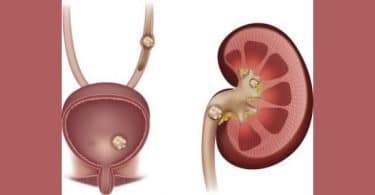We have emphasized the important items in the investigation of any individual case of disorder which include the collection of all the disturbances which the patient voluntarily reports, the changes observed by the attendants and the physician’s own observations plus the modalities of the various symptoms aggravations and ameliorations of time and all modifying influences.
The record is not entirely complete without the account of the habits of the patient and previous history and enough of family history to indicate the nature of the disorders of progenitors. Such history frequently illuminates what would otherwise be obscure conditions in the individual under consideration.
The next step is to make valuable use of the record obtained and this applies equally to the written record and that which is collected for use in the mind of the prescriber without writing. Of course, no satisfactory study can be made without having the details on paper for constant reference without possibility of lapses in recollection.
We have emphasized the combined characteristics of the case as the guide to the prescription. It is necessary to detect in each case what are these characteristics. It may be admitted at this point that this particular step in the work is not always easy, but it becomes easier with every effort in this direction and year after year if you follow this plan you realize that the mental grasp of the characteristics of a case is firmer and clearer. The most obvious features and the most troublesome features are not always the characteristic ones, but the characteristics are revealed in the small details of these.
TIME
Time has an influence in such a large number of conditions that we investigate usually that phase. It may be that the patient or his attendant has observed no decided aggravation of his entire condition at definite times but will record that certain symptoms are usually worse in some part of the day or night. Cough, diarrhoea, headache or some other symptoms occur regularly at the same time of day, although the patient would say he is no worse than he is when it occurs at any other time. The occurrence of the symptoms at that time constitutes the time aggravation in that case. Hence you perceive he is worse every evening, or after midnight, or at night or in the morning.
FEVER
Scan the record again to detect the nature of the patient’s complaints. If there is fever present it may or may not be important, according to the nature of the disturbance. Every acute miasm includes rise of temperature in its symptomatology. Fever, therefore, is classed as a common feature in acute miasms and is not of use in distinguishing the case. The type of fever, however, may be marked and characterize the disorder. Observe whether the fever is remittent, continued, intermittent, inflammatory, septic or zymotic, also the time of day that the highest temperature occurs. It is not uncommon among those who do not seek characteristics, to aim their prescription or one prescription among many, at the fever. There appears to be an impression that fever is a menace to the patient and must be combated. Fever is an accompaniment of the condition and may be no more serious in certain cases than sneezing in a case of coryza. With our rational view of disorder, we shall not be affrighted because of its presence but use what evidence it reveals to restore order throughout, then the fever subsides because there is nothing to occasion it.
PAIN
The presence of pain is perhaps most variable as valuation is considered. To the patient, pain is a very important consideration but not always so as a prescription guide, though the prescriber desires to eliminate it. There are certain conditions of which pain is a common feature. The classic definition of inflammation includes the color. In inflammation of any part pain is to be expected. Inflammation without pain is peculiar. The painlessness may characterize the case, becoming a strong characteristic. Though pain is common in inflammations, the character of pain varies. Pain is translated into different sensations by different patients and the pathologist can offer no explanation why one should experience a drawing, one, a stinging or burning one, a pressing pain. The character of pain, therefore, may distinguish the case wherever pains occur. More important than the character of pain may be the occasions that aggravate or ameliorate the suffering in the various parts. The man who explains everything will elaborately discourse on the part the sensitive nerves play, the action of the part affected as a reason for the pain, etc., etc., but observation reveals that in some individuals motion relieves pains that are aggravated by motion in others; that reason will not determine whether pressure, rubbing or touch ameliorates or aggravates the pain, but the patient will quickly tell you that heat, cold, various positions, sleep, weather changes, time of day, phases of the moon (time of month), bathing, noise, even the various functions of parts not experiencing the pain, exert varying influence on the individual case of the pains in local disturbances. Thus the modalities of the patient are built up from the evidence in the local manifestations of pain. When the pain can be rationally explained as a pressure symptom or any other common basis, it is no longer distinctive and characteristic.
FUNCTIONAL, DISTURBANCES
Functional disturbances in any individual case of disorder are as variable as pain, considered as guiding lines for a prescription. When the functional disturbance is entirely consequent upon the local condition it is common and unimportant. Vomiting in cancer or ulcer of stomach, watery or mushy evacuations in cholera or typhoid fever, paralysis in apoplexy, etc., are common expressions of the condition, not characteristic of any individual suffering that disorder. Peculiarities of the vomiting, of the diarrhoea, unaccountable features in the paralyzed parts are characteristic of the individual, strange, rare, unusual forms. Thus the local affection becomes the avenue through which the characteristics are expressed: time, position, circum- stances of various sorts modify the common features.
TISSUES AND FORMS OF DISORDER
Abscesses, atrophy of parts, cancerous ulcers, catarrh, chorea, cyanosis, indurations, paralysis, lack of reaction, relaxation of muscles, indicate the general disorder of the patient but are manifestations in various localities: generals built out of particular or local manifestations. Similarly we recognize in local manifestations the evidences of anaemia, chlorosis, inflammation of various tissues, injuries, sensitiveness in various parts, swelling of different tissues, all of which come under the head of generals.
DISCHARGES
Normally the fluids and discharges of the body are odorless, each of definite color and character, and non-irritating. When they present abnormal colors, consistence, become offensive and excoriating, it represents the abnormal functioning of the tissues. These also may characterize the individual, when the same character of discharges is manifest in various places. Pulsatilla has bland discharges from mucous membranes except the leucorrhoea, which is acrid.
APPARENT DESCREPANCIES
This suggests another peculiarity. In some remedies and some disordered constitutions, general modalities will obtain in all but one or two phases, and here the modalities may be opposite to those of other parts. The patient in most disturbances may want to be warm but in certain head pains want cold on the head. Phosphorus wants cold things in the stomach and head and warm things for thorax disturbances and pains through the body. There may be restlessness and desire for motion, with aggravation of pain from motion of the affected part. Cina wants to be in motion and cina children want to be carried, but the touch of lifting them occasions an aggravation of the soreness.
Thus must the record be studied to determine what are the symptoms characteristic, whose totality sketches the image of the disordered patient. Truly indeed is the work half done when this image is determined. With this basis we are prepared to open the repertory and search the similar remedies and the one most similar. It is far from a homeopathic prescription to select that which has one or two or even three of the characteristics if there are other characteristics which are entirely foreign to that remedy. If the correct three are selected that may serve, but all the characteristics must be considered and used in the test to be certain that such remedy is indeed the most similar.
The degree to which the similarity approaches is by no means the measure of the value of other remedies. While the most similar remedy will search to the innermost and restore order from the innermost to the outermost, generals and particulars, that which is somewhat similar yet opposite or unrelated in some lines will not eradicate even those things which are similar, for it is not the remedy that has the entrance key to unlock the innermost where the origin of the disturbance resides. It may sometimes palliate temporarily but the changes that follow mislead the prescriber and distort the image upon which the prescriptions must be made. Some local manifestations may be altered but the disturbance is not reached at its origin and will continue to express itself.
CASE:
The following brief report may illustrate:
A woman of 27 years, at the close of her third parturition had hemorrhage of dark, unclotted blood from a uterus in which the placenta was so adherent that it was forcibly removed. Symptoms of loss of blood appeared almost as soon as the hemorrhage was apparent. These symptoms were checked and involution occurred under treatment. Before 48 hours passed, fever developed. Lochia at first was very light color, watery, and, later, thin, brown, acrid, offensive, so scanty as to suggest that it was suppressed, with the accompanying fever. Headache was the most troublesome complaint to the patient. Fever did not recede below 101°, with pulse of 120. By the use of the repertory, you can easily confirm the hint that the features of the lochia have perhaps given, that Secale is called for. Under its influence, every abnormal feature of the lochia was changed, except that dependent upon actual loss of blood; the temperature reached 99° and the pulse 100, and the distressing headache disappeared within 48 hours. The details of the lochia strongly expressed the character of that patient in disorder. If it had been used earlier, the more serious condition would not have developed.
From: The Critique Volume XVI January To December, 1909
James William Mastin, M. D. , Managing Editor




